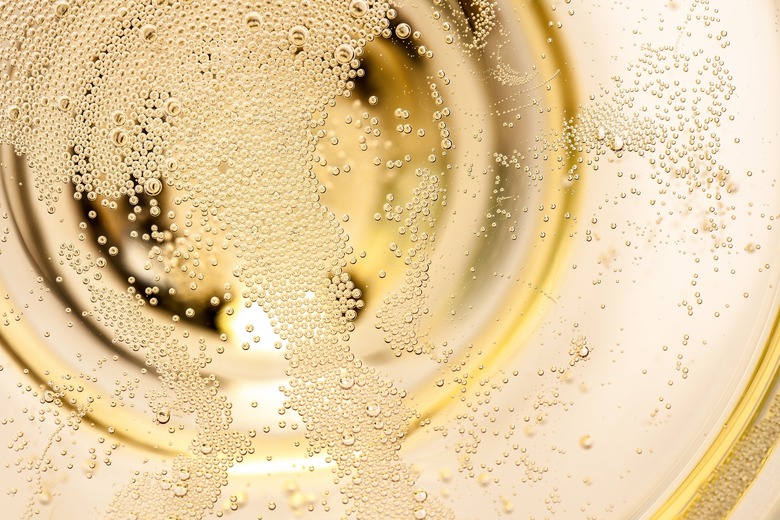America Is In Love With Prosecco
I have been to so many parties and receptions recently where the first wine I was offered was a glass of prosecco. Judging from its growth (1.7 million litres worldwide in 2009 to 8.5 million litres worldwide last year), the whole world is in a tryst with this beverage. It is Italy's single biggest wine category and it is not hard to see why.
First, choice is limited within sparkling wine styles and prosecco is half the price of major Champagnes (and a tenth or less of the price of the most exclusive examples of Champagne). Most prosecco sell for $15 or less.
Second, it is immediately easy to like. It doesn't have to be sold as something that will "grow on you." The wine is a straw yellow color, light and fruity with aromas of white flowers and green apple and citrus fruits being the dominant notes in the flavor.
Third, it is flexible. It can be the toasting wine, it can be paired with seafood, poultry, or creamy pasta dishes, and it can be in the body of a cocktail.
Fourth, it is reliable. Vintages, cork taint, and other similar things just don't come up in discussions of the wine. It is made to be consumed young.
With all this permissiveness, prosecco may sound like a wine without rules. However, that would be wrong. Here are some "facts on the ground" about prosecco.
Prosecco is made with 85 percent or more of the Glera grape. A specific list of other varieties constrains how far the nose and palate of the wine can deviate from the reference set by Glera. The best-known of those other varieties are chardonnay, pinot grigio, and pinot noir.
Prosecco must be a white wine, which impacts the production method. This is illustrated by the fact that one of the permitted grape varieties is pinot nero (pinot noir), the backbone of rosé sparkling wines in Champagne, Franciacorta (Italy), and the New World. In fact, Franciacorta rosé must contain at least 15 percent pinot nero alongside white varieties. Thus, the magic 85/15 percent blend of white/red grapes to get the rosé of Franciacorta is within the grape blend rules of prosecco.
To prevent a rosé emerging, the red grapes must be taken off the skin before the must becomes impregnated with skin color. On store shelves you frequently see bottles of rosé alongside prosecco, even made by the same winery. A close look shows that they are not labeled prosecco. For obvious reasons, the decision not to allow a prosecco rosé was controversial among growers and winemakers.
Sparkling prosecco has three sweetness categories. In increasing order of sweetness they are: brut (less than 12 grammes of sugar/litre), extra dry (between 12 and 17), and dry, also known as demi-sec (17 to 32 grammes).
Prosecco is typically produced in a different way than Champagne. The secondary fermentation takes place in a large tank, rather than in the bottle. This is known as the Martinotti method (and also as the Charmat method). This has several differences. First, it is simply cheaper, lowering the cost of the final product. Second, it allows an inventory to be kept in tank after large harvests to be bottled on demand. Third, the absence of ageing on the yeast drastically alters the organoleptic properties of the wine. It is fresh and fruity rather than yeasty and autolysised. Fourth, the bubbles are larger and less long-lived than those in a Champagne method wine. This seems to be a result of the Martinotti method.
One exception to the above is that the Champagne method of production is allowed for the DOCG-designated wines. If it is used, the phrase Metodo Classico will almost certainly appear on the front label.
What are good examples of prosecco in the U.S. market? Here are three:
The Bisol Jeio Prosecco DOC is straw yellow with light green hints and a fruity bouquet of apple, light hints of apricot, and citron. The aroma is floral, fresh, and pleasant, reminiscent of white and meadow flowers. The flavor is elegant on the palate, soft, and features a fruity aftertaste. Jeio's fresh, youthful character pairs well with light food and canapés and is an ideal start to a meal or simply as an aperitif.
The Mionetto Prosecco Brut DOC has an intense fruity bouquet with a hint of golden apples. It is very dry, fresh, light in body, and well-balanced. This wine is perfect alone as an aperitif or as a delightful complement to appetizers such as prosciutto or mild cheese.
With a pale lemon color, the Villa Sandi Prosecco DOC boasts aromas of apple, pear and a touch floral; dry and light in body with flavors of peach, lemon and lime, fresh apple, and melon. An excellent aperitif to accompany savory hors' d'oeuvres or steamed shellfish.
I have been personally impressed with Mionetto among prosecco producers. They produce a range of wines retailing from $9 to $27 of steadily increasing quality. The premium wines are especially good examples of the art of the possible within the Martinotti method.
With the holidays approaching, prosecco is going to be on a lot of people's agendas.
